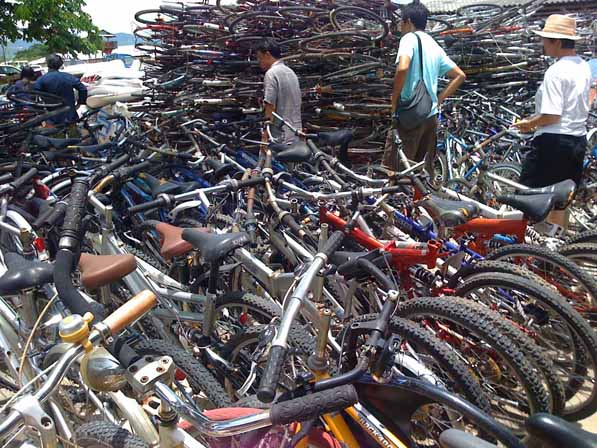Boom or Bust?

In addition, the defection of Saw Lah Pwe and his troops, who will potentially join forces with the KNLA, a mainly Christian Karen militia which the primarily Buddhist DKBA broke away from in 1994, may become the equivalent of a hand grenade tossed into the SEZ.
Observers say that Saw Lah Pwe’s defection will probably result in conflict near the SEZ between his forces and the KNLA on one side, and either the DKBA or the Burmese military on the other. And if a significant portion of the remaining DKBA forces refuse to join the junta’s border guard force, then they may end up battling the Burmese military as well. If this happens, all bets on the SEZ materializing any time soon will probably be off.
On top of the other impediments to the SEZ, a string of disputes over Thailand’s decision to build a concrete reinforcement on their river bank led to the junta closing down the Myawaddy-Mae Sot border crossing in July. Not only did the junta halt border trade in goods by shutting down all known trade routes, it prohibited people from entering Burma from Thailand and blocked their ability to cross the Moei River at the official Friendship Bridge crossing and at more than 20 well-known unofficial river crossings.
Despite the junta’s claim that the border closure relates to the Thai embankment issue, some observers believe the closing is a muscle-flexing tactic by Burma’s military regime, designed to demonstrate to DKBA leaders that Naypyidaw controls their income source, thereby forcing the DKBA to join the BGF.
Closing the border is apparently not the only method the junta is using to send a message to the DKBA. Standing in a Mae Sot compound that holds his stockpile of inventory, a trader pointed across the river to Shwe Koko, the riverside headquarters of DKBA Special Battalion 999, which is commanded by Chit Thu.
“Burmese troops are now posted at the checkpoint the DKBA had controlled for many years,” he said.
And on Aug. 6, Karen sources told The Irrawaddy that junta troops had seized the gate controlled by the DKBA and raised Burma’s national flag.
The regime’s message may be getting through. Although no official announcement has been made, sources said that both Chit Thu and Gen Kyaw Than, the DKBA commander-in-chief who also has substantial interests in cross-border trade, have agreed to join the BGF. Once the DKBA transforms into a member of the BGF the border will be reopened, the sources said.
The SEZ was originally conceived as part of a broader, multilateral vision that included an Asian highway running from India to Vietnam. In 2001, the Asian Development Bank said in a report that by 2004 it will be possible to travel an all-weather multi-lane road from Burma through Thailand, Laos and into Vietnam, “made possible by the East-West economic corridor.”
One purpose of the highway is to bring a steady flow of trade through the SEZ, and in addition to all the other elements in play, the rate of progression of the SEZ may depend on whether that vision moves forward.
Currently, a twisting dirt road is the only option for the thousands of migrant workers travelling from Myawaddy to Rangoon. It is so narrow and dangerous that the Burmese government has to alternate the direction of traffic flow each day. And despite the optimistic pronouncements on the MOC website, the SEZ for the most part lies dormant.
“Most of them [the warehouses] are empty at the moment,” said Moe Swe of the Yaung Chi Oo Association, a Mae Sot-based labor rights group. “There are big flashy signs, but no one has bought anything yet.”
A local Thai official expressed frustration at Burma’s delay and the junta’s inability to “get their act together.” He said the main problem is the lack of infrastructure on the “other side, which can’t even manage their electricity properly.”
Despite the cabinet approval and construction having started, many believe that Burma is still far from being able to launch an efficient and profitable SEZ.
“We have seen these announcements many times before, so I’m not holding my breath,” said Sean Turnell, a Burma economics expert.
« previous 1 | 2 |
